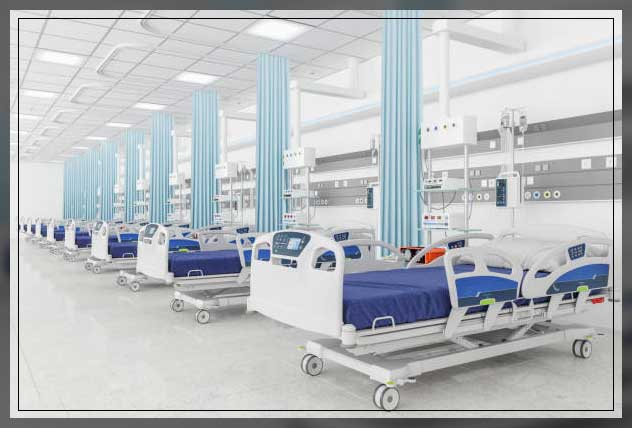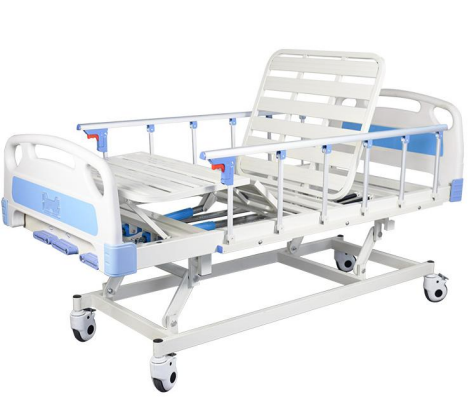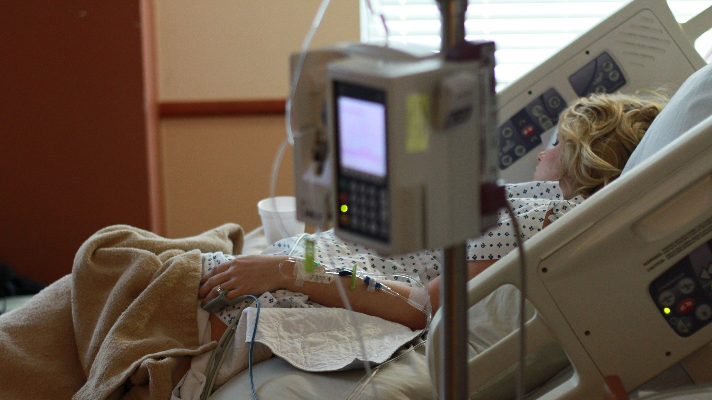Hospital Beds For Home Use Fundamentals Explained
Hospital Beds For Home Use Fundamentals Explained
Blog Article
Hospital Beds For Home Use Fundamentals Explained
Table of Contents6 Simple Techniques For Hospital Beds For Home UseWhat Does Hospital Beds For Home Use Mean?Getting The Hospital Beds For Home Use To WorkThe Main Principles Of Hospital Beds For Home Use The Basic Principles Of Hospital Beds For Home Use Hospital Beds For Home Use - TruthsThe 25-Second Trick For Hospital Beds For Home Use
There are three primary types of medical facility beds: manual, semi-electric, and fully-electric. These beds make use of hand cranks to adjust the bed's height and elevate and lower the head and the foot.
Semi-electric beds have an electric motor to raise and reduce the head and foot portions of the bed. Patients and caretakers adjust the placing by pressing switches making use of a hand necklace. The elevation of the bed is changed manually with a hand crank. Full-electric beds have an electrical motor that can elevate the head and foot sections of the bed along with the whole height and positioning of the bed.
Unknown Facts About Hospital Beds For Home Use
There are numerous kinds of medical facility beds, each designed to fulfill particular client needs. Right here are some typical kinds: This is the most usual kind of healthcare facility bed, created for general medical use.
Reduced to the ground than a standard bed. This type of bed is created for bigger patients, with a broader framework and higher weight ability than a common bed.
This sort of bed is developed for critically unwell people who need open monitoring and specialized medical tools such as ventilators and infusion pumps. This type of bed is developed for use throughout labor and shipment, with adjustable positions and functions to support the mother and baby during the birth procedure.
Hospital Beds For Home Use Can Be Fun For Everyone
Numerous feature and the accessories carry out broadening grip to different components of the vertebra and the extremities without relocating the human body. These are just a couple of instances of the sorts of hospital beds available. The particular sort of bed utilized will depend on the patient's problem, medical demands, and various other aspects.
Right here is things you need to know. A one-function hospital bed is a clinical bed that allows a person to move just the head or foot area up or down. A 2 function health center bed generally refers to a type of medical bed that has two adjustable features to assist clients in hospitals or care centers.

Getting My Hospital Beds For Home Use To Work
A 7-function ICU bed is a kind of clinical bed that provides numerous flexible functions to support seriously ill clients in a critical care unit (ICU) (hospital beds for home use). The seven features usually consist of: Backrest modification: The backrest can be adapted to various angles to assist the person stay up or rest pleasantly
Height modification: The bed can be raised or lowered to make it simpler for clients to enter and out of bed, and for caregivers to give treatment. Trendelenburg position: The entire bed can be tilted to promote blood circulation and flow in the body. Reverse Trendelenburg placement: The bed can additionally be tilted in the contrary instructions to advertise blood flow and flow in the upper body.
While even more affordable than electric designs, these beds require exertion for modifications. The main advantages of manual beds are their price and integrity, as they don't depend on power. The demand for hand-operated initiative can be a constraint in situations where quick adjustments are essential or where caretakers encounter physical obstacles.
The Greatest Guide To Hospital Beds For Home Use
Semi-electric medical facility beds offer a balance of guidebook and electric controls. These beds provide a perfect middle ground between manual and completely electrical options, offering ease of use without the full cost of electrical models.
Semi-electric beds are well-suited for patients who require moderate changes to the head and foot sections yet can take care of without constant height adjustments. This makes them an next affordable service for those looking for comfort and ease without the demand for constant repositioning. Totally electric health center beds feature electric controls for seamless modifications to the elevation, head, and foot sections.
Specialized medical facility beds, such as ICU beds, long-lasting care beds, and bariatric beds, are meticulously made to attend to specific clinical demands. These beds use customized treatment for varied person teams, enhancing both end results and comfort. In the following areas, we will certainly explore the main kinds of specialty health center beds, outlining their specific benefits and applications.
With years of experience in manufacturing electrical linear actuators - hospital beds for home use and close cooperation with the medical care industry, TiMOTION is well-positioned to provide trusted medical care remedies. Our up and down incorporated business takes care of every action of the production procedure, from style to actuator assembly, ensuring we deliver extraordinary value and tailored options customized to your certain needs
Excitement About Hospital Beds For Home Use

To find out even more about incorporating these modern technologies into your items, contact us today. More reading:.
Data is sourced from the Medicare Expense Record. Accessed January 2025. Temporary intense care healthcare facilities have the greatest average variety of beds at 187. They are one of the most usual type of hospital in the U.S. and compose more than 50% of U.S. hospitals. Kid's medical facilities official source have 178 beds on average and VA hospitals average 175 beds.

Not known Factual Statements About Hospital Beds For Home Use
A medical facility bed is a bed designed specifically for clinical purposes. It is not only an area for individuals to relax, however additionally a system for medical operations. Unlike ordinary home beds, hospital beds usually have adjustable attributes, which can help with clinical team review to make numerous adjustments according to the requirements of clients, such as transforming the elevation, inclination, and assistance angle of the back and legs of the bed.
Report this page